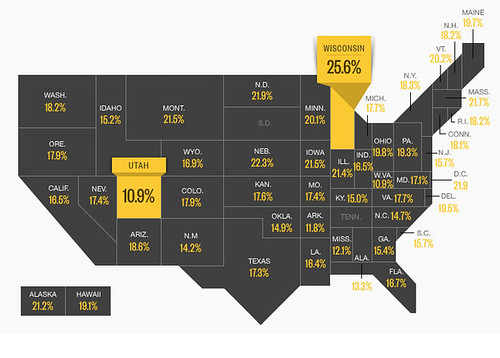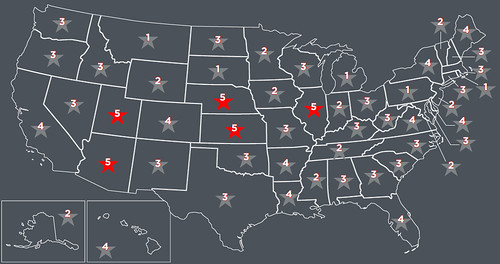
Here’s an odd little story from Virginia, sent in by an alert reader (thanks Jeff). In many places, there’s a growing debate about plastic bags, paper bags or no bags at the grocery store. In Virginia, there currently is no law regarding them, but that hasn’t stopped stores all along the southeastern coast of Virginia — an area known as Hampton Roads — from insisting that customers get a plastic bag, if they’re buying beer, that is. It’s not the law, of course, as confirmed by Kathleen Shaw, a spokeswoman for the state Department of Alcoholic Beverage Control.
According to a story in the local Daily Press, apparently “[c]ashiers are either erroneously told by their employer that Virginia requires them to bag alcohol or they mistakenly equate store policy to state law. Either way, beer is bagged at nearly every supermarket and convenience store in Hampton Roads.” As the article, entitled The ABCs of plastic bags and beer shopping in Virginia, points out, in many places outside the area, stores are actually prohibited from using plastic bags, while still others champion their use.
But whether you think plastic, paper or your own bag is the way to go at the grocery store, that’s not what caught my eye. It’s the notion that it’s “beer” that has to be covered before it leaves the store. As for why that might be the case, multiple 7-11 franchise owner Raj Gupta, had this to say: “it’s convenient for the customer [and] it deters customers from drinking alcohol in the store parking lot.” Uh-huh. Whether it’s more “convenient” is debatable, and a bit beside the point if it’s mandatory at all of his stores. And as for deterring customers from ripping open the thin plastic bag and starting to drink in the parking lot, I can’t believe placing the six-pack into a bag is really going to do much good. Gupta certainly doesn’t care about the environment, as he also states. “If they don’t want the bag, they can throw it out in the trash can when they leave the store.” And then start drinking it, one presumes, which is what he was claiming the bag prevented.
But since those reasons are as flimsy as the plastic the bags are made out of, it seems more likely it’s his third reason why “he requires cashiers to bag six-packs, bottles of wine, and single cans and bottles of alcohol.” And it’s a doozy. “[I]t prevents minors from seeing people carrying alcohol.” Holy crime wave, Batman, thank goodness Gupta’s on the scene. We wouldn’t want the little kiddies “seeing people carrying alcohol.” Goodness knows what untold harm that might cause. He doesn’t mind selling alcohol, but he doesn’t want children seeing it. If parents bring their children into his stores, do employees have to cover the kid’s eyes? Or is alcohol on a shelf safe; it’s only dangerous when an adult is carrying it? Or when it’s outside the sanctuary of the store.
Yes, I’m making fun of him, but only because he deserves it. Yes, he’s free to run his stores any way he sees fit, just as anyone is free to not shop at any of his stores. But it points out a deeper issue, which is that he has some weird, unhealthy issues with alcohol. They’re obviously deep enough that he believes that children seeing adults carrying alcohol is such a problem that he’d make it his “company policy” to avoid it happening. As I pointed out, not enough of an issue that he’d voluntarily stop selling alcohol, but still. Why that might be, I can’t fathom, but I’m curious enough to want to know. It has to have something to with the way alcohol is demonized by certain factions of our society. It has to have something to do with our society only hearing one side of the story, with neo-prohibitionist groups spreading their biased propaganda, and doing everything in their power to prevent anyone else from having their say, telling the opposite side of that tale. How else to explain a businessman who sells alcohol believing it’s in his best interests to make sure that children don’t get the idea that people buy alcohol. What possible benefit could he derive from that “company policy?” Frankly, I’m stumped. I can’t think of one reason that’s not fanatical, based on erroneous information or just plain looney.






